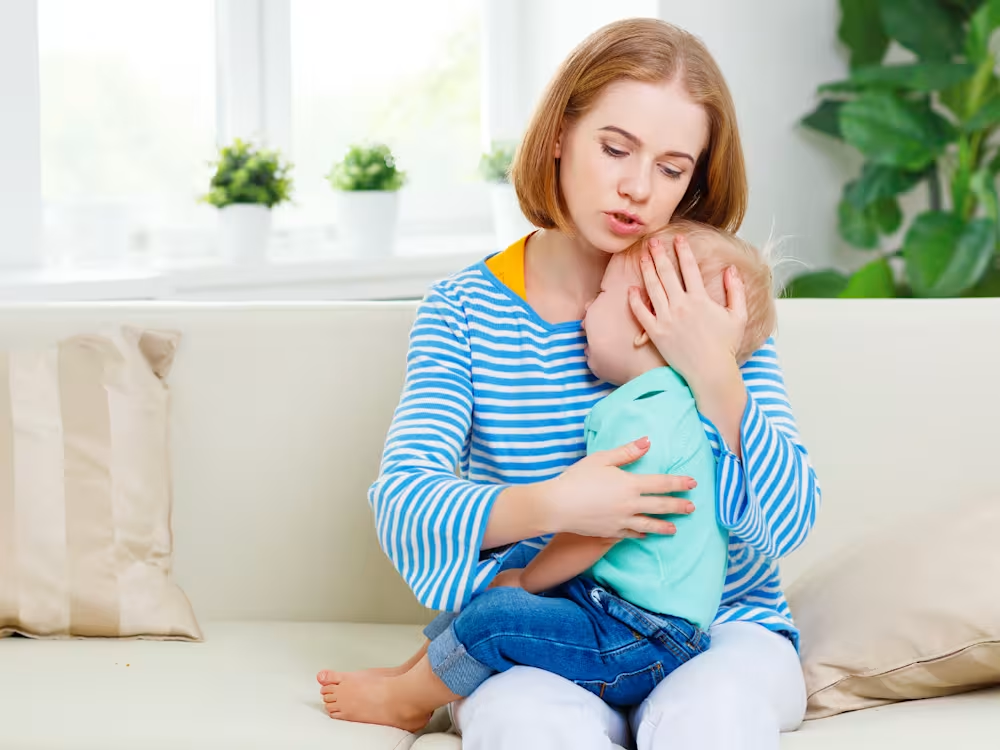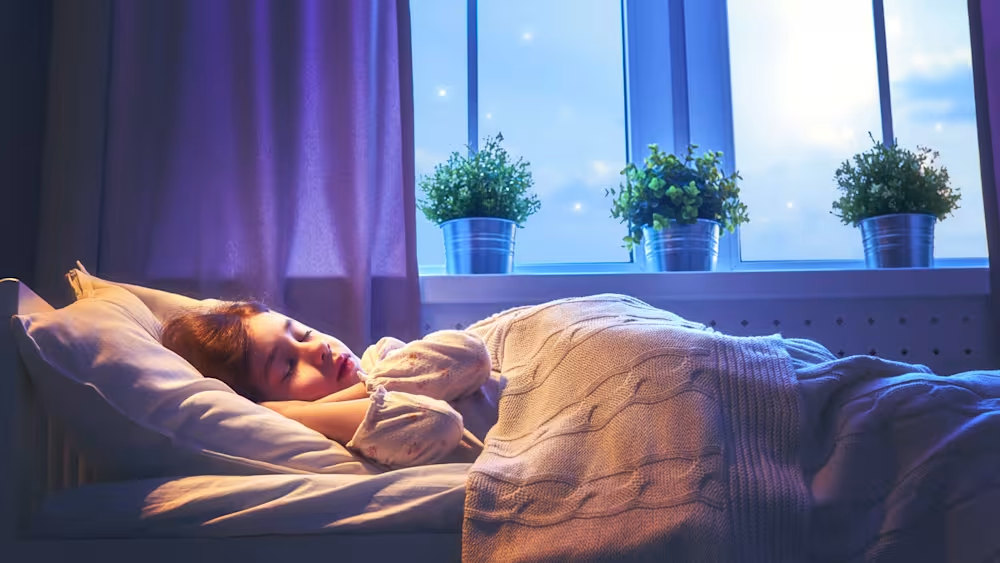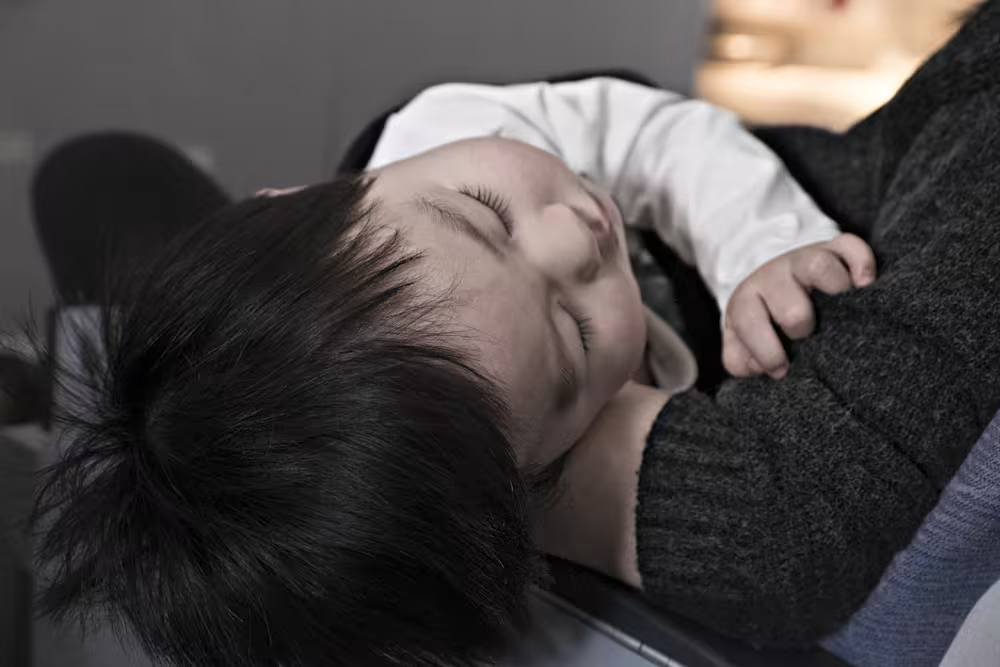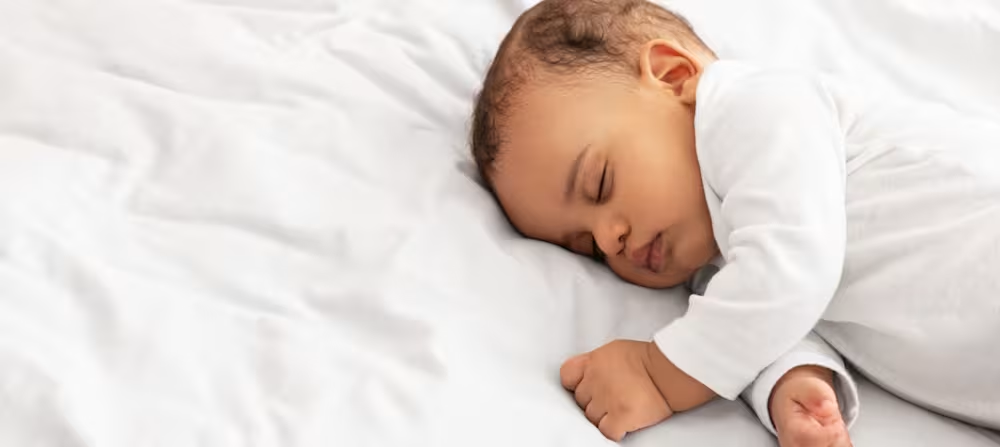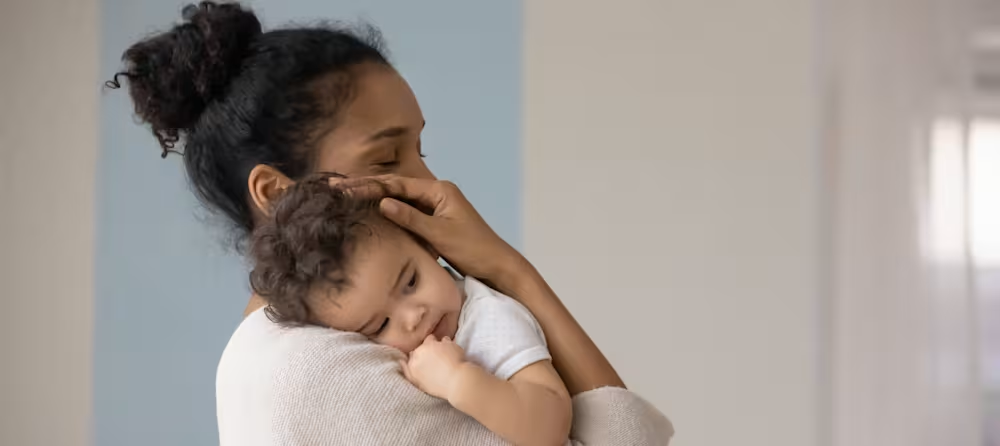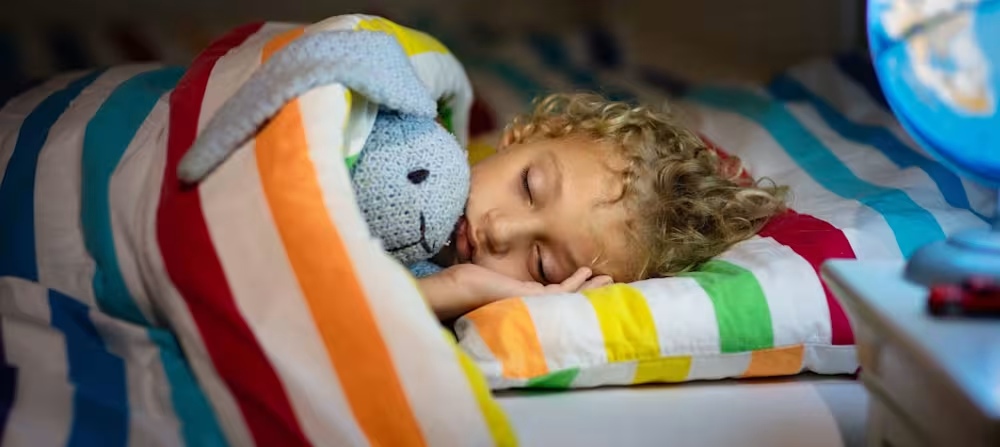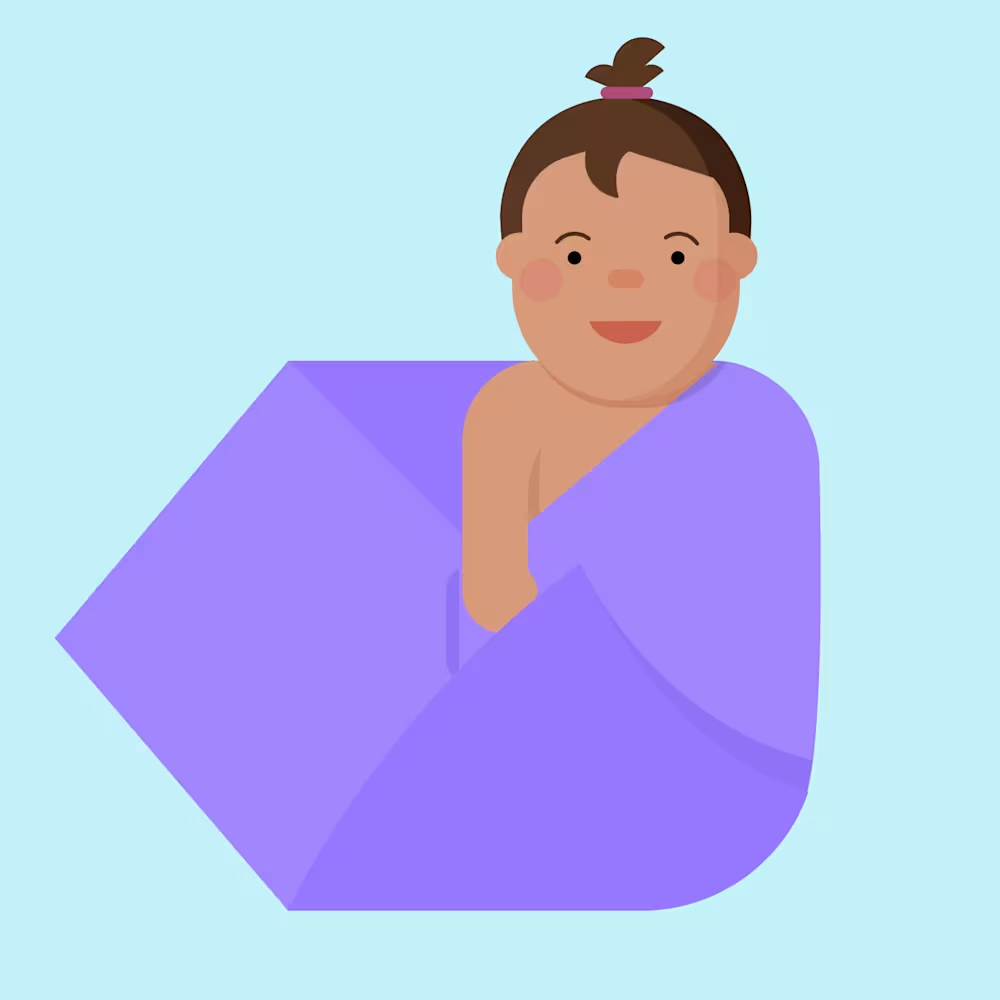Can white noise help babies sleep?
Updated Oct 16, 2025

When your baby isn’t sleeping well, you're likely to receive all sorts of advice. Some of the input you get can sound a little far-fetched or controversial, depending on whom you ask.
Meanwhile, as a new parent, all you really want to know is what actually works — and whether it’s safe.
White noise is one of those suggestions that caregivers are sometimes a bit apprehensive about or aren’t quite sure how to use. Here's what you should know so you can decide for yourself (and your little one).
Table of Contents
What is white noise?
White noise refers to any noise containing many frequencies with equal intensities. Simply put, it’s noise that doesn’t have any pattern to it and is composed of all the sounds the human ear is capable of hearing.
White noise may help some adults and children — and babies!— fall asleep faster and stay asleep longer. In addition to white noise machines marketed specifically to improve sleep, there are numerous white noise apps available and even entire YouTube channels dedicated to white noise.
At what age is it best to start?
White noise can be used at any age to potentially help your baby sleep better. White noise can really make a difference in your little one’s sleep quality, especially if they struggle to stay asleep for more than 30 minutes.
When should you stop using white noise?
Some people aim to stop using white noise by the time their child is 2 years old. Others continue to use it until their child is 3 - 4 years old and is able to decide for themselves if they want it playing while they sleep. Plenty of older kids and adults sleep better with it, too.
There aren't any definite time limits on how long you should use white noise to help your child sleep. Instead, when to stop using white noise for baby is a decision left up to caregivers, or in some cases, the child.
How does white noise help babies sleep?
When asked if white noise is good for babies, pediatric sleep experts often respond with a resounding yes! But exactly how does this work? Here are some ways:
White noise mimics sounds in the womb
Continuous sound can help drown out household noise
White noise can be added as a step in bedtime routines
White noise may reduce crying and improve sleep
We'll explain further below:
Way #1: White noise mimics sounds in the womb
According to older research [] life inside the uterus is quite loud, with noise levels being close to that of a lawnmower (about 90 decibels). Perhaps this is why fussy babies respond to the more intense rumbling sounds, lower tones, and sounds associated with white noise.
White noise mimics womb sounds, such as your heartbeat and digestive noises, and creates a soothing, comfortable, and familiar environment where babies feel protected and calm. These feelings of comfort and security may make it easier for little ones to fall asleep [].
Way #2: Continuous sound can help drown out household noise
Continuous ambient noise can help drown out loud or unexpected noises [] that can be stimulating to babies or wake them up from their sleep. If there are other children in the house with different sleep schedules, this may be especially helpful. With soothing sounds creating a cocoon of sorts, your baby may be more likely to fall asleep faster and to sleep longer.
Way #3: White noise can be added as a step in bedtime routines
can help cue that it’s time to sleep and make the transition to bedtime easier for babies. White noise can be a step in your child’s nap and bedtime routines now and indefinitely!
Way #4: White noise may reduce crying and improve sleep
A small 2018 study [] found that newborn colicky babies cried less and slept more than babies who were soothed in a swing. While this may not be the case for every baby, adding white noise to your baby’s sleep environment may be an easy, effective way to help your little one settle during sleep times.
White noise vs. pink noise
When thinking about white noise, we generally think of unrecognizable sounds of static on a TV or radio. The sound of a lawnmower, car engine, vacuum, or hair dryer are also examples of white noise.
Pink noise can be found in nature — running water, rain falling, wind blowing, leaves rustling, waves crashing — and has less varying frequencies than white noise. Many sound machines have options for both white noise and pink noise.
White noise may do a better job of drowning out jarring or very loud noises such as doors slamming, fireworks, and thunder. White noise also more closely resembles what babies hear in the womb. Pink noise works well for masking more subtle noise or continuous sounds such as people talking or the TV playing in another room.
So which is better at promoting relaxation for babies, white noise or pink noise? While researchers are considering how pink noise may improve cognitive ability and memory when used for adult sleep, more study is needed when it comes to its benefits for babies.
| Aspect | White noise | Pink noise |
|---|---|---|
| Frequency spectrum | Broad spectrum, equal intensity across all frequencies | Lower frequencies have higher intensity |
| Sound characteristics | Consistent and static | Softer and more soothing, resembling things found in nature |
| Usage | Drowning out very loud noises | Masking more subtle noise or continuous sounds |
Which white noise works best to help babies sleep?
There's no definitive answer to which white noise works best to help babies sleep. However, there are a few factors that may make a specific type of white noise more appealing to your child and family’s preferences:
White noise phone apps: There are a variety of white noise apps available to download on your mobile device. However, this option requires leaving your phone in your child’s nursery (though never in their crib or other sleep space!), putting your phone on airplane mode, and silencing notifications so they don’t wake your child.
Fan-based sound machines: This type of sound machine plugs in and produces fan-based sounds of rushing air that may be soothing to your child. You can control volume and tone on most models.
Pink/brown noise sound machines: These machines often have multiple sound options, like white, pink, or brown noise (even more intense than pink noise in the lower-frequency range). There are often many settings to choose from on these machines, including tone, volume, timers, and more.
Is white noise safe for babies?
White noise isn't inherently dangerous or bad. However, many people wonder about white noise volume being too loud or too close and potentially damaging babies’ ears. In 2014 the American Academy of Pediatrics (AAP) [] tested 14 white noise machines designed for infants and found that all of the machines at maximum output exceeded hospital-recommended noise levels.
As a result of this study, the AAP released its own recommendations (and reiterated safety concerns in a 2023 policy statement []) for how close white noise machines should be to a child’s sleep space and what is considered a safe and ideal decibel level for a sleeping baby.
According to the AAP, white noise machines should be placed at least 7 feet (200 centimeters) away from a baby’s sleep space and the volume should be lower than the maximum volume setting — generally no louder than 50 decibels.
How many decibels is effective without being damaging?
When asked how loud should white noise be for baby, the American Academy of Pediatrics has suggested the volume be set to no louder than 50 decibels (about as loud as a quiet dishwasher) to avoid potential hearing damage.
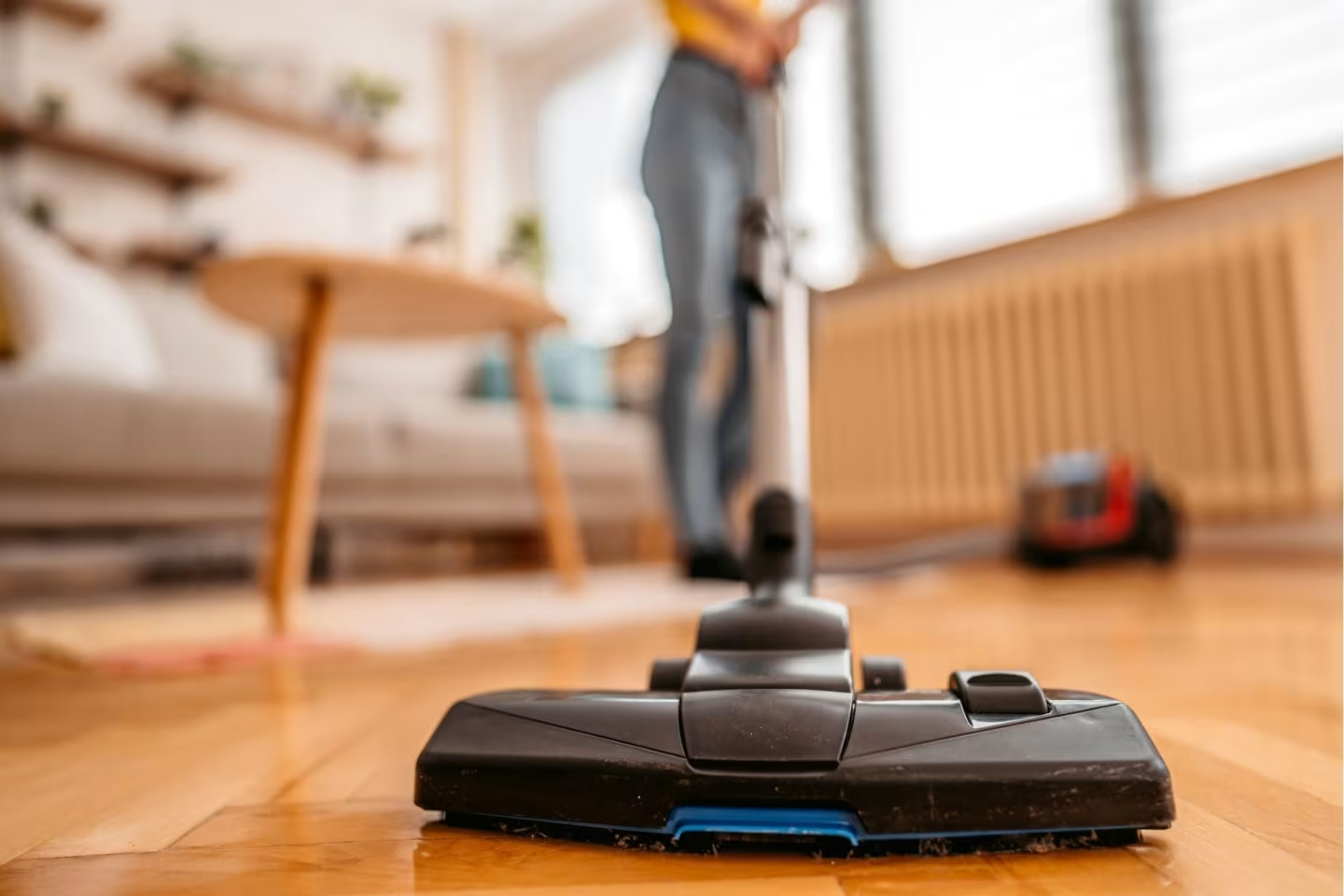
Pros and cons of white noise for babies
While caregivers have used the sound of hair dryers and vacuums to put babies to sleep for decades, an often-quoted but small study published in 1990 [] in the Archives of Disease in Childhood was the first to offer some proof that white noise can improve infant sleep.
According to the study, 80 percent of babies fell asleep within 5 minutes of listening to white noise. But again, this was a small study — and it was only done on newborns between 2 - 7 days old.
White noise may also block out excess stimulation and thus, reduce stress levels in babies. But older claims that white noise can reduce the risk of SIDS [] need more current research.
White noise has the potential to damage a child’s delicate hearing and auditory development if not used appropriately. Another drawback of white noise for babies is dependency on white noise to fall asleep, which could be a problem when traveling or if daycare doesn't use white noise.
3 tips for how to use white noise for baby sleep
Tip #1: Place white noise machines a safe distance away from baby for sleep
The AAP recommends that noise machines are at least 7 feet (200 centimeters) away from your baby’s sleep space to ensure the volume isn’t too loud.
Tip #2: Set the volume lower than the maximum for sleep times
To avoid potential hearing damage, the AAP recommends that baby sound machines aren’t louder than 50 decibels. These recommendations are often lower than the maximum volume on many sound machines, so consider using the lowest effective volume for your child’s sleep. Also be sure to thoroughly read the sound machine’s instructions, including safety warnings about the specific product.
Tip #3: Consider securing a backup and/or battery-operated option
If your child comes to rely on a sound machine for sleep, it may be beneficial to have a backup source of white noise and/or a battery-operated option. You never know when a sound machine may malfunction! A battery-operated backup can also be handy in the event of a power outage, for example, or if you’re traveling and don’t have access to an electrical outlet.
Takeaway
White noise mimics womb sounds, comforting babies and helping them settle by blocking out disruptive noises.
It can create a consistent, soothing environment that promotes longer and more restful sleep sessions.
Safety is paramount: Place white noise machines at least 7 feet away from your baby's sleep area and keep the volume below 50 decibels.
While beneficial, dependency on white noise to sleep may pose challenges when away from home or if routines change.
Ultimately, the decision to use white noise should prioritize safety and what best supports your baby's sleep patterns and overall well-being.
White noise for babies FAQ
Share article:
Note: The content on this site is for informational purposes only and should not replace medical advice from your doctor, pediatrician, or medical professional. If you have questions or concerns, you should contact a medical professional.
8 Sources
Table of Contents
Share article:
